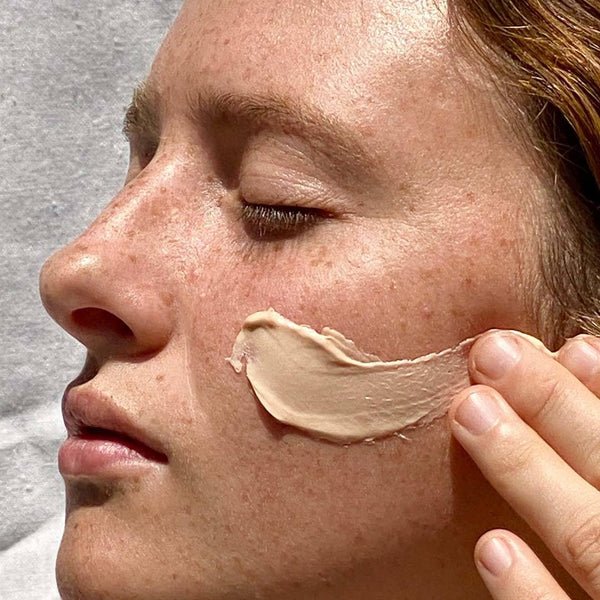
Why We Need To Stop Calling Breast Reduction A Cosmetic Surgery
Because Breast Reduction Surgery Is Often Necessary
I was in high school the first time I realized I was hauling around a larger chest than most girls my age. “And your shirt should be a size large because you’ve got big boobs,” the tennis coach told me as she handed out uniforms.
My breasts continued to outpace the rest of my body throughout my adolescence and into my 20s. Each year, I had to find stronger, more expensive sports bras or double up. I couldn’t do some exercises the way they were designed to be done. Belly-down yoga poses made me feel like I was floating slightly above the floor while everyone else got a great stretch.
“My breasts continued to outpace the rest of my body throughout my adolescence.”
I mentioned my concerns to the gynecologist, who told me to tell her about my breast pain and discomfort during my doctor’s appointments for the next few years to make it easier for insurance to approve a reduction. I did, for about six years, and each time she noted it on my chart.
But it wasn’t until June 2015 that I made my first appointment. It was a hot summer day in sweltering South Carolina and, after a walk with a coworker, I violently scratched the itchy hollow on my chest where sweat collected. The perspiration had soaked the underwire on my bra and was trapped against my skin. I decided then that it was time to pursue a reduction, if the money part made sense. I made an appointment for a consultation with a plastic surgeon to discuss a breast reduction—but I needed more information, specifically financial information.
I cranked my bra straps extra tightly before the appointment, so deep marks were visible on my skin. I didn’t want to be potentially disqualified because the photos the nurse would take for insurance didn’t show the whole story.
According to the American Society of Plastic Surgeons (ASPS), a prior history of medical concern and dermatology exams regarding symptomatic macromastia (large breasts) is helpful for anyone considering a breast reduction surgery.
“Someone who wants [a breast reduction] now and hasn’t been documenting their pain with a medical professional may be looking at a year of appointments just to get the paperwork necessary for coverage.”
The ASPS also notes that insurance companies, in addition to requiring multiple documented reports from referred specialists, sometimes want months of documented treatments by a physical therapist, chiropractor, or orthopedist before they’ll even consider covering a breast reduction. That means someone who wants one now and hasn’t been documenting their pain with a medical professional may be looking at a year or more of appointments just to get the paperwork necessary for coverage. Planning well-ahead is key—just as my gynecologist said it would be.
At my consultation, the surgeon said he was fairly certain insurance would not cover the operation because it was usually reserved for women who were “quite noticeably larger.” Disappointed, I left and assumed all I’d get was a bill for the visit, despite having a veritable paper trail regarding my issues.
The $100 consultation bill did come a month later, along with an envelope from my insurance company. “Is this what I think it is?” I asked myself. My insurance actually deemed that my breast reduction was medically necessary, despite the plastic surgeon’s doubts! They would cover 80 percent of the procedure and, with my high deductible plan, that would leave me on the hook for about $4,000. Since it was a medical expense, I could pay as little as $25 a month until it was paid off. I decided to go for it.
In addition to the financial burden, I would have to take two weeks off work for the surgery and my recovery, at the very least. Fortunately, my company offered paid time off in both vacation and sick days.
“The surgeon used a Sharpie to make incision marks, and we joked about measuring twice and cutting once.”
On the day of the surgery, I told the surgeon that I’d like to go down to a B cup from my DDDs. Given the structure of my breast tissue, which was more “meat” than fat, he said he would probably only get me a C cup. (After the swelling went down, he was correct.)
The surgeon used a Sharpie to make incision marks, and we joked about measuring twice and cutting once. The procedure took just a few hours, and I was home recovering by that afternoon. I ended up having to undergo surgery again to remove an egg-sized hematoma on my left side—but I was back home again the same night following the second procedure.
For the first week of my recovery, I had to be driven to the doctor’s office every day for follow-up appointments—though I don’t remember much from these visits. My body felt like I’d been whomped with a baseball bat in my ribcage, especially on the twice-operated left side.
What I do remember is my breasts looking monstrous. After my surgeries, I was wrapped up in a surgical bra, which I had to keep on at all times except for a few minutes a day when the incision lines had to be cleaned. Black stitching encircled my nipples and continued in small straight lines down my breasts, wrapping under each one in little anchor shapes. I remained fairly sore but well-medicated during my recovery—it truly was a haze, as I didn’t sleep much unless it was after taking the pain medications that my husband helped dispense in regular intervals.
“My body feels more balanced now. I have less shoulder, neck, and back pain.”
It took two weeks until I began feeling like myself again, and it was six to eight more months before I could put on a bra, but there was no need for constricting underwire anymore! Today, my breasts are a size D—they went back up with a little weight gain—though they are much less pendulous than before, making my half-year rashes a thing of the past. I can now wear wicking sports bras in everyday life, and my body feels more balanced now. I have less shoulder, neck, and back pain—it’s incredible how much tension the weight of breast tissue puts on your body.
Moreover, knowing I could undergo a major surgery has made me feel more confident in myself. It gave me confidence in my personal strength and confidence that when people look at me now, they see much more than DDDs and underboob sweat.
Unfortunately, breast reductions are still considered cosmetic procedures until the patient goes through all the hoops to ensure the surgery is deemed necessary for health purposes. While it’s true that some breast surgery procedures are purely cosmetic lifts, for many people who spend their teenage years and 20s thinking about it, it’s life-altering—as it should be.
Breast reduction surgery is a major and often necessary procedure. It should be considered as such—by doctors, insurance companies, employers, and anyone else who is often the make-or-break point for whether a person can finally experience relief.
“Breast reduction surgery is a major and often necessary procedure. It should be considered as such.”
If you’re considering a breast reduction, my advice would be to talk to your doctor about it. An appointment with a reputable plastic surgeon is a worthwhile next step.
Mostly, try not to give up. It can be challenging to advocate for yourself in a medical system that often feels overwhelming and even impossible, especially when you realize it can take years to accomplish one relatively simple and worthwhile procedure.
While there may be a long road ahead, you are not alone. And you deserve the medical care you need—whether it’s called a “cosmetic procedure” or otherwise.
April Blake is a travel and food writer who lives in South Carolina. She writes at www.theaprilblake.com, and enjoys trying new beverages, vinyasa yoga, and petting her dogs.




